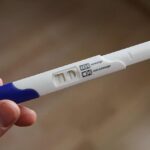ICSI Treatment
January 10, 2025
Where to find the best IVF Centre in East Delhi 2025?
January 10, 2025Female fertility is a topic of great significance and intrigue, impacting the lives and aspirations of countless individuals worldwide. As medical advancements continue to progress, assisted reproductive technologies, such as IVF, have become increasingly accessible, offering hope to those facing challenges on their journey to parenthood. We dig into the complicated facets of female fertility in this detailed guide, brought to you by Select IVF, studying the variables that impact it, understanding the reproductive timeline, and putting light on how IVF may be a transformational answer for many. Join us on this enlightening journey as we unlock the secrets behind female fertility and navigate the landscape of assisted reproductive technologies.

Understanding Female Fertility
Understanding female fertility involves recognizing the complex interplay of factors influencing a woman’s reproductive health. Age, hormonal balance, and overall wellness contribute to the delicate and individual nature of female fertility.
The Basics of Female Reproductive Anatomy
To comprehend female fertility, it is essential to start with the basics of reproductive anatomy. This section will explore the female reproductive organs, including the ovaries, fallopian tubes, uterus, and cervix, outlining their roles in the intricate process of conception.
The Menstrual Cycle: The menstrual cycle is a fundamental aspect of female fertility. Understanding its phases—menstruation, follicular phase, ovulation, and luteal phase—is crucial for comprehending fertility. We’ll explore the hormonal changes, duration, and significance of each phase in the context of reproduction.
Ovulation: Ovulation, the release of a mature egg from the ovary, is a pivotal moment in the menstrual cycle. We’ll delve into the factors influencing ovulation, signs and symptoms, and the fertile window. Knowing when ovulation occurs is essential for couples trying to conceive naturally.
Hormones and Female Reproductive Health: Hormones play a vital role in regulating the female reproductive system. This section will cover the key hormones involved, including estrogen, progesterone, follicle-stimulating hormone (FSH), and luteinizing hormone (LH). We’ll explore how these hormones work together to maintain reproductive health.
Factors Influencing Female Fertility
Several factors influence female fertility, including age, hormonal balance, reproductive health, and lifestyle choices. Genetics, medical conditions, and environmental factors also play roles. Understanding these elements empowers women to make informed decisions and seek appropriate interventions on their fertility journey.
Age and Fertility
Age plays a pivotal role in female fertility, with distinct implications at various life stages. We will explore the impact of age on fertility, the decline in ovarian reserve, and the challenges associated with conception in different age groups.
Lifestyle and Environmental Factors
An array of lifestyle and environmental factors can influence female fertility. From nutrition and exercise to stress and exposure to environmental toxins, this section will provide insights into how these factors can either enhance or hinder reproductive health.
Medical Conditions and Female Fertility
Certain medical conditions can affect female fertility, ranging from polycystic ovary syndrome (PCOS) to endometriosis. We will explore these conditions, their impact on fertility, and potential treatment options.
Signs and Symptoms of Fertility Issues in Women
Women facing fertility challenges may experience certain signs or symptoms that indicate potential underlying issues. These symptoms can include:
- Irregular Menstrual Cycles: Women with irregular or missed periods may have ovulation issues, impacting fertility.
- Painful Periods or Intercourse: Painful menstruation or discomfort during intercourse could indicate conditions like endometriosis or fibroids.
- Hormonal Symptoms: Excessive facial hair, weight gain, or acne may signal hormonal imbalances, such as PCOS.
- Repeated Miscarriages: Recurrent miscarriages may suggest underlying fertility issues or genetic factors that need evaluation.
Fertility Assessment and Diagnosis
Fertility Testing: For individuals navigating fertility challenges, comprehensive fertility testing is crucial. This section will outline the various diagnostic tools available to assess female fertility, including hormone testing, imaging studies, and genetic screening.
Understanding Infertility: Infertility can be a complex and emotionally challenging journey. This part of the guide will define infertility, explore its causes, and offer insights into when it’s time to seek professional assistance.
Assisted Reproductive Technologies
Assisted Reproductive Technologies (ART) encompass medical interventions aiding conception. In vitro fertilization (IVF), intrauterine insemination (IUI), and surrogacy are examples. These technologies offer hope to individuals and couples facing fertility challenges, providing avenues to realize their dreams of parenthood through innovative medical interventions.
In Vitro Fertilization (IVF)
In vitro fertilization (IVF) is a groundbreaking assisted reproductive technology that has helped many individuals achieve their dream of parenthood. We’ll delve into the IVF process, success rates, and considerations for those exploring this option.
Egg freezing is gaining popularity as a proactive measure for preserving fertility. We’ll explore the reasons individuals choose egg freezing, the process involved, and the potential success rates when using frozen eggs for conception.
Other Assisted Reproductive Technologies
Beyond IVF and egg freezing, there are various other assisted reproductive technologies available. We’ll provide an overview of intrauterine insemination (IUI), gamete intrafallopian transfer (GIFT), and intracytoplasmic sperm injection (ICSI), among others.
Fertility Preservation and Future Trends
Fertility preservation, a pivotal aspect of reproductive healthcare, safeguards fertility potential for the future. Advances in cryopreservation techniques, innovative technologies, and evolving research signal promising trends, offering individuals options to preserve their fertility, ensuring greater control over family planning in the ever-progressing landscape of reproductive medicine.
Fertility Preservation Options
For individuals facing factors that may compromise their fertility, fertility preservation offers hope. We’ll discuss options such as embryo freezing, sperm freezing, and ovarian tissue preservation. Understanding these options can empower individuals to make informed decisions about their reproductive future.
Technological Advancements in Fertility
The field of reproductive medicine is continuously evolving. In this section, we’ll explore emerging technologies and innovations that may shape the future of female fertility. From genetic testing to artificial intelligence applications, the possibilities are vast.
Fertility Testing for Women
For women experiencing fertility challenges, a comprehensive evaluation can help identify potential causes. Testing typically includes:
- Ovulation Testing: This involves measuring hormone levels, particularly LH, to confirm whether ovulation is occurring. Basal body temperature tracking or ovulation predictor kits can also be used.
- Hormone Testing: Blood tests to assess levels of FSH, LH, estrogen, and thyroid hormones can reveal hormonal imbalances affecting fertility.
- Ultrasound Examination: Ultrasounds provide images of the ovaries and uterus, helping to diagnose conditions like PCOS, fibroids, or ovarian cysts.
- Hysterosalpingography (HSG): This X-ray procedure assesses the condition of the fallopian tubes and can identify blockages or structural abnormalities.
- Laparoscopy: In some cases, a minimally invasive surgery known as laparoscopy may be recommended to detect and treat endometriosis, adhesions, or other pelvic issues impacting fertility.
- Ovarian Reserve Testing: Tests like Anti-Müllerian Hormone (AMH) and antral follicle count help evaluate a woman’s ovarian reserve, which is crucial in understanding her fertility potential.
Treatment Options for Female Fertility
Advances in reproductive medicine offer numerous options for women struggling with fertility. Depending on the cause, treatments can range from lifestyle modifications to advanced reproductive technologies. Here are some common treatments offered by specialists at Select IVF:
- Ovulation Induction (OI): For women with irregular ovulation, medications like Clomiphene Citrate or Letrozole can stimulate ovulation, improving the chances of conception.
- Intrauterine Insemination (IUI): IUI is a minimally invasive procedure where sperm is placed directly in the uterus during ovulation. It is often used when the cause of infertility is unexplained or due to mild ovulation issues.
- In Vitro Fertilization (IVF): IVF is one of the most effective treatments, especially for women with blocked fallopian tubes or advanced reproductive age. In this process, eggs are fertilized outside the body, and the resulting embryo is transferred to the uterus.
- Intracytoplasmic Sperm Injection (ICSI): ICSI is a specialized IVF technique where a single sperm is injected directly into the egg. It is especially beneficial in cases of severe male infertility or previous IVF failure.
- Egg Freezing: For women who wish to preserve their fertility, egg freezing is an option that allows them to store their eggs for future use. This is particularly helpful for those undergoing medical treatments that may impact fertility or for women who want to delay pregnancy.
- Surgical Interventions: For conditions like fibroids, endometriosis, or tubal blockages, surgical procedures can help restore reproductive health and improve fertility outcomes.
- Lifestyle Modifications: Adopting a healthy lifestyle, including a balanced diet, regular exercise, and stress management, can play a critical role in enhancing fertility. Specialists at Select IVF provide guidance on lifestyle adjustments to support fertility treatments.
Success Rates and Challenges
IVF Success Rates: Understanding the success rates of IVF is crucial for individuals considering this option. This section will provide an overview of the factors influencing IVF success and what prospective parents can expect.
Challenges and Ethical Considerations: While IVF offers hope, it is not without challenges and ethical considerations. We will address these issues, discussing the emotional and ethical dimensions associated with assisted reproductive technologies.
Conclusion
Female Fertility is a multifaceted and fascinating aspect of human biology. By understanding the intricacies of the menstrual cycle, factors influencing fertility, and the role of assisted reproductive technologies, individuals can make informed choices about their reproductive health. Select IVF is dedicated to providing reliable information and support to those on the journey to parenthood. Whether you’re exploring natural conception or considering assisted reproductive technologies, knowledge is the key to empowerment on the path to building the family of your dreams.
Frequently Asked Questions:-
At what age are girls most fertile?
A woman’s peak reproductive years are between the late teens and late 20s. By age 30, fertility (the ability to get pregnant) starts to decline. This decline happens faster once you reach your mid-30s. By 45, fertility has declined so much that getting pregnant naturally is unlikely.
How do I know if I’m fertile female?
You can use a special thermometer to check your temperature every morning before you get out of bed. You’re most fertile 2 or 3 days before your temperature rises. Your cervical mucus becomes clearer and thinner with a slippery consistency, like egg whites.
Is 32 too late to have a baby?
An increasing number of women are opting to start their families later in life. In the United States, the birth rates for women in their 30s have reached the highest levels in four decades. However, it’s important to note that while this trend allows for greater flexibility, older mothers may face heightened risks, including an increased likelihood of experiencing miscarriages.
How can I check my fertility at home?
There are multiple options available, with the main three being ovulation predictor kits, follicle-stimulating hormone (FSH) tests, and at-home semen analysis. The range of these tests varies significantly in terms of both price and accuracy, emphasizing that there is no universally applicable at-home fertility test.
Can infertile woman have periods?
While irregular periods may signal issues with ovulation, it’s important to note that fertility challenges can persist even if you experience menstruation. Having a period doesn’t guarantee conception, particularly when menstrual cycles are irregular.
What can I do if my husband can’t get pregnant?
The appropriate solution for your situation will depend on your partner’s specific condition. Intrauterine Insemination (IUI) stands out as a frequently employed method for facilitating pregnancy, especially when the male partner’s sperm count is at least 10 million. This technique involves collecting the man’s semen and subjecting it to specialized laboratory procedures to ensure optimal conditions for fertilization.
Read Also:



